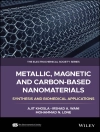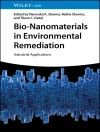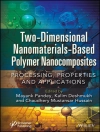The only standard reference in this exciting new field combines the physical, chemical and material science perspectives in a synergic way.
This monograph traces the development of the preparative methods employed to create nanostructures, in addition to the experimental techniques used to characterize them, as well as some of the surprising physical effects. The chapters cover every category of material, from organic to coordination compounds, metals and composites, in zero, one, two and three dimensions. The book also reviews structural, chemical, optical, and other physical properties, finishing with a look at the future for chiral nanosystems.
Table of Content
An introduction to chirality at the nanoscale
Optically active supramolecules
Chiral Nanoparticles
Gels as a media for functional chiral nanofibers
Expression of chirality in polymers
Nanoscale exploration of molecular and supramolecular chirality at metal surfaces under ultrahigh-vacuum conditions
Expression of chirality on physisorbed monolayers observed by scanning tunnelling microscopy
Structure and function of chiral architectures of amphiphilic molecules at the air/water interface
Nanoscale stereochemistry in liquid crystals
The nanoscale aspects of chirality in crystal growth: Structure and heterogeneous equilibria
Switching at the nanoscale: Chiroptical machines and switches
Chiral nanoporous materials
About the author
David Amabilino is a tenured scientist at the Materials Science Institute (ICMAB, CISC) near Barcelona, where he is presently the vice-director. He worked as a postdoc on self-assembly of interlocked molecules in Fraser Stoddart’s group (then in Birmingham, Engalnd), on porphyrin-containing assemblies in Jean-Pierre Sauvage’s group (ULP, Strasbourg) and chiral polymers in Jaume Veciana’s group (ICMAB, CSIC) after receiving both BSc (hons.) and Ph D from Royal Holloway and Bedford New College (University of London). His current interests include the influence of supramolecular and stereochemical effects on molecular materials, and especially the expression of chirality at the nanoscale and the effects it has on the hierarchical passage of handedness. In research related to this, he is coordinating two projects founded by the European commission.












